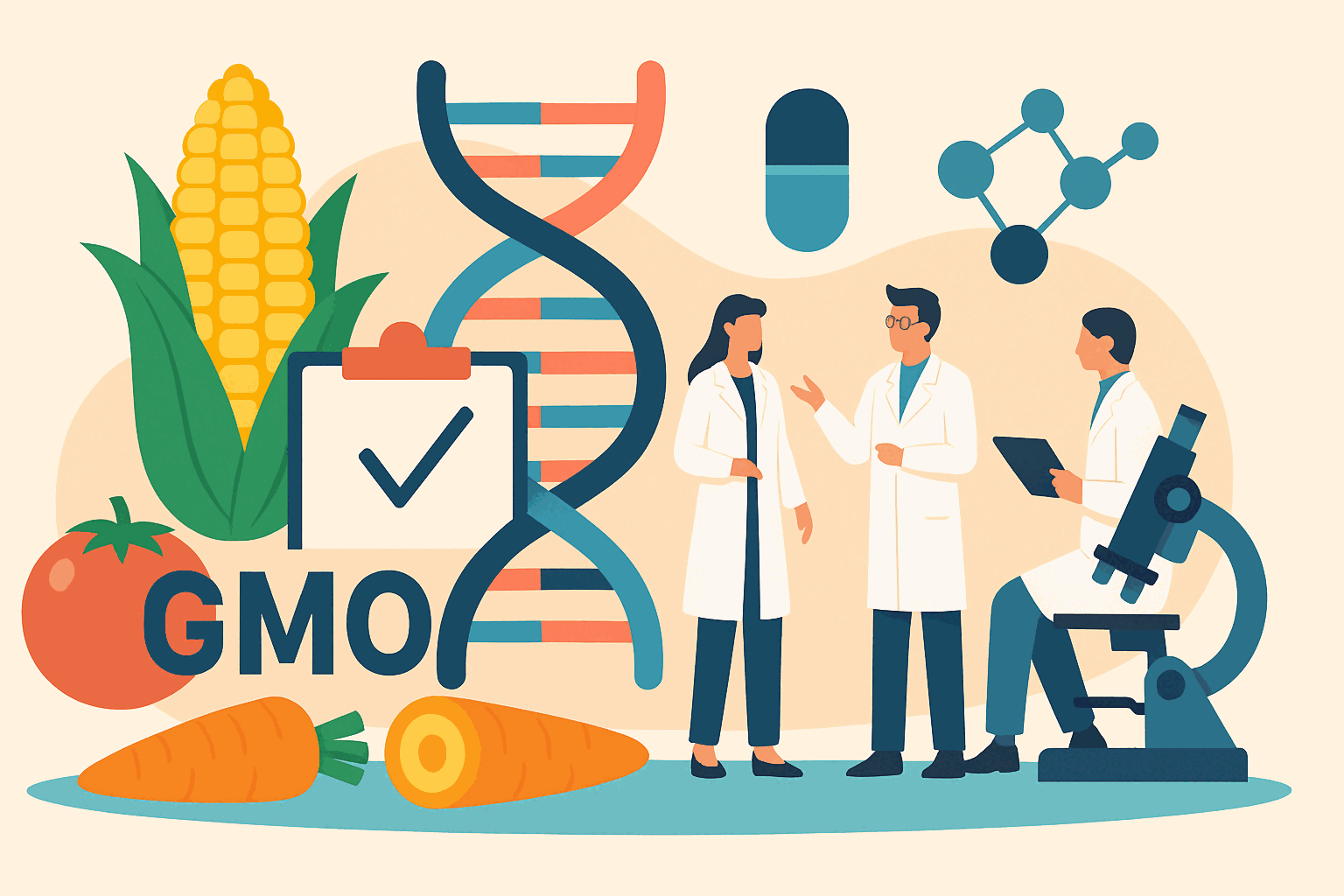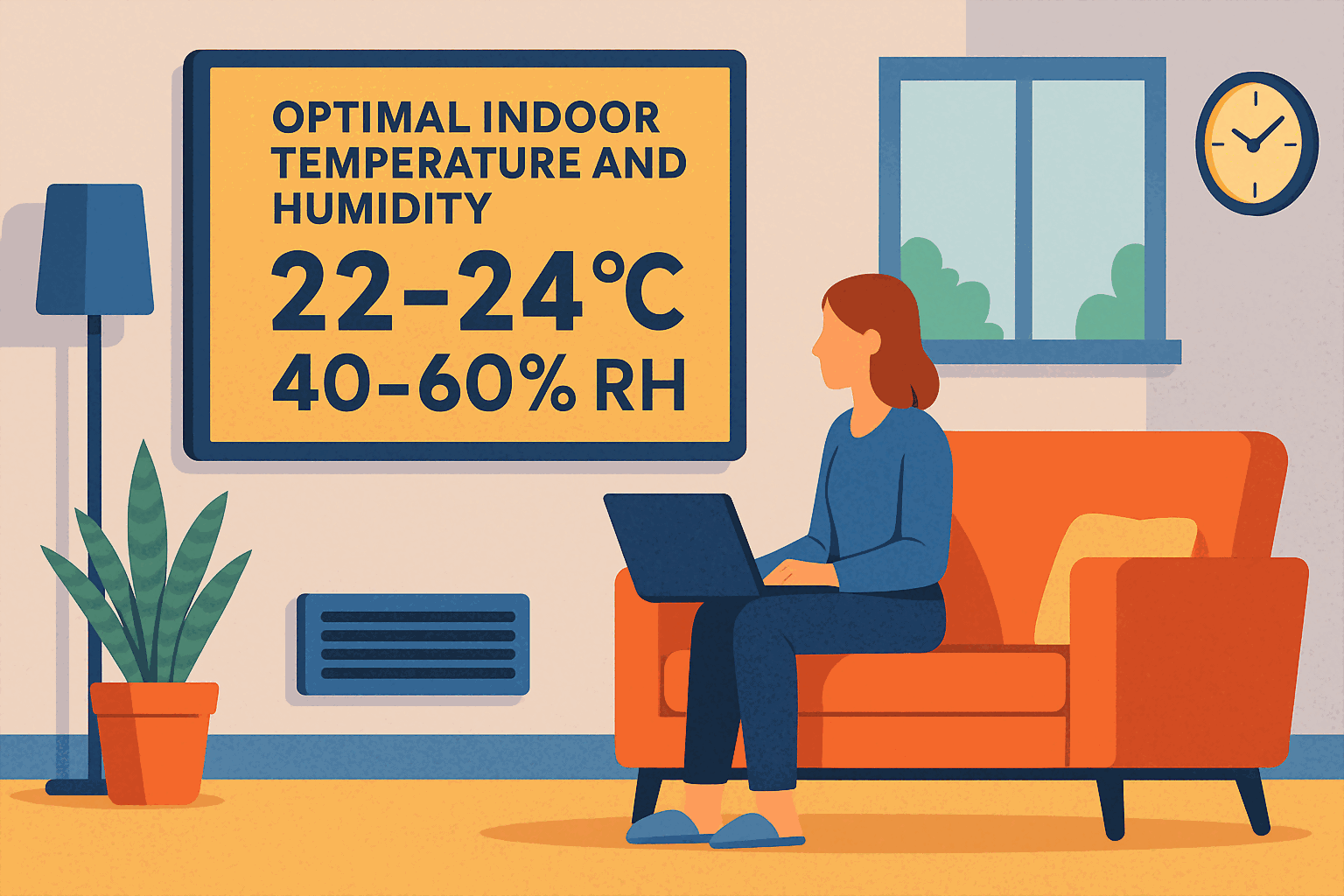
GMOs: A Data-Driven Approach to Safety and Sustainability
- Olivia Hart
- Nutrition , Health
- April 30, 2025
Table of Contents
The GMO Question, Revisited
We weren’t planning to cover GMOs again. It seemed like the topic had been settled in the scientific community. But we received a thoughtful question from a reader that made us realize: it’s still worth clarifying, thoroughly and factually.
Let’s start with genetically modified crops — a cornerstone of the public GMO debate.
Are GMOs Dangerous?
No — and here’s why:
Every food, genetically modified or not, is broken down in your digestive tract into basic molecular components: amino acids, fatty acids, and sugars. The human body doesn’t “see” the origin. Whether a protein came from an organic apple or GMO corn, it’s reduced to the same molecules.
GMO DNA does not rewrite your genome — it is digested like any other DNA. In fact, humans have been altering plants for thousands of years, often by more dangerous methods than today’s targeted gene-editing.
Breeding vs. Engineering: A Perspective
Traditional plant breeding used mutagenesis — exposing seeds to radiation or chemical toxins to induce random mutations. Fields were flooded with pesticides, herbicides, and fungicides to keep crops alive. Ironically, this method was accepted for decades without public outcry.
In contrast, genetic engineering uses precise tools to achieve known, targeted results — often introducing a single gene, like drought resistance or pest immunity — with no collateral mutations.
Where Did the GMO Panic Come From?
The fear started in the 1990s, during a wave of public anxiety about new technologies. Two flawed studies — one on rats’ intestines, the other about monarch butterflies — received disproportionate media attention and were later discredited or retracted.
Despite this, the myth stuck — fueled by conspiracy narratives, anti-corporate sentiment, and organic marketing. However, all major global health organizations — including the WHO, FAO, National Academy of Sciences, and the American Medical Association — have reviewed the evidence and concluded that GMOs are safe.
Read more:
https://www.ncbi.nlm.nih.gov/pmc/articles/PMC3791249/#Sec12
What Are the Real Benefits?
Genetically modified crops can:
- Provide higher and more reliable yields
- Be resistant to pests, viruses, and drought
https://www.ncbi.nlm.nih.gov/pmc/articles/PMC7061863/#pbi13261-bib-0009 - Require fewer chemical inputs — meaning less pesticide runoff
https://www.ncbi.nlm.nih.gov/pmc/articles/PMC7061863/#pbi13261-sec-0003
Paradoxically, choosing GMO foods might reduce your actual exposure to harmful substances compared to “organic” crops treated with higher doses of natural but toxic compounds.
Who Benefits from GMO Bans?
Mostly bureaucracies, which gain new regulatory offices and oversight powers — and organic marketing companies, which can sell standard carrots at triple the price by branding them “eco.”
There’s little scientific justification for such bans, especially when they limit access to affordable, resilient food in low-income regions.
What About Religion?
Religious authorities — including the Vatican, Islamic scholars, and Jewish kashrut boards — have examined the ethical dimensions of GMOs.
They’ve concluded that GMO foods are kosher, halal, and religiously permissible, especially because they help reduce hunger and suffering [https://www.ncbi.nlm.nih.gov/pmc/articles/PMC3791249/#Sec13](https://www.ncbi.nlm.nih.gov/pmc/articles/PMC3791249/#Sec13
https://www.catholic.com/qa/preferential-option-for-the-poor-churchs-view-on-genetically-modified-food-gmos):
- Vatican position: https://www.catholic.com/qa/preferential-option-for-the-poor-churchs-view-on-genetically-modified-food-gmos
- Islamic scholars approve GMOs if they comply with Sharia law
- Jewish perspective: https://oukosher.org/blog/industrial-kosher/genetic-food-modification-kosher-laware-compatible/
So yes, GMO tofu is religiously approved.
Genetic Engineering Isn’t Just About Food
This technology also powers life-saving medical advances:
- mRNA vaccines like Moderna and Pfizer were built using gene-editing tools
https://www.nature.com/articles/s41587-021-00912-9 - Gene therapies now treat cancer, inherited diseases, and blood disorders
https://www.ncbi.nlm.nih.gov/pmc/articles/PMC9833004/ - CRISPR-based medicine is entering clinical practice
https://www.fda.gov/science-research/science-and-research-special-topics/crispr
We already live in a world shaped by genetic science — and that future is only growing.
Final Thought
The only realistic concern around GMOs today is the possibility of allergic reactions, but thanks to advances in modern science, this risk can be assessed much more effectively than ever before. Through cutting-edge predictive modeling, we are now able to evaluate protein allergenicity before a genetically modified crop ever hits the market. This means that the likelihood of unexpected allergic reactions is significantly minimized, ensuring safety for consumers.
Ultimately, it’s not about fear — it’s about data. Data-driven approaches, grounded in rigorous research and analysis, offer the most accurate picture of safety and efficacy. And when we look at the data, the conclusions are clear: GMO crops are safe, effective, and, in many cases, more sustainable than conventional or “natural” alternatives. They require fewer pesticides, use less water, and often yield more food with fewer resources, which is essential for feeding a growing global population in the face of climate change and limited arable land.
As we continue to embrace the benefits of GMOs, it’s important to stay grounded in the science and not be swayed by baseless fears or misinformation. When we follow the data, we see that GMOs are a powerful tool in creating a more sustainable, productive, and resilient agricultural system. The future of food is not in avoiding innovation, but in using it wisely and responsibly.
